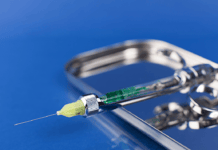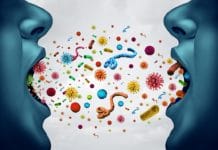It was bound to happen, sooner or later. Fortunately for our generation, it is happening now rather than years into the future. Using the classic tale of the small boy, David, defeating the feared giant, Goliath, as an analogy, researchers from the University of Alabama have developed a small molecule that, when unleashed against Streptococcus mutans (known to be the ultimate bacterial bad guy causing dental caries), brings this horrific monster to its knees, rendering it unable to penetrate and destroy tooth enamel.
Taking Down the Giant
The research team, composed of Sadanandan Velu (UAB College of Arts and Sciences), Hui Wu (UAB School of Dentistry), Qiong Zhang (UAB Department of Pediatric Dentistry), Zhang Hua (UAB Department of Pediatric Dentistry), Jing Zou (UAB Department of Pediatric Dentistry), Bhavitavya Nijampatnam (UAB Department of Chemistry), Thao Nguyen (UAB Department of Chemistry), Xia Cai (UAB Department of Microbiology), and Suzanne M. Michalek (UAB Department of Microbiology) co-authored the exciting report titled “Structure-Based Discovery of Small Molecule Inhibitors of Cariogenic Virulence.” The paper explains how they created a molecule capable of preventing, or at least impeding, the development of dental caries.
In essence, the molecule operates as an inhibitor, blocking the ability of a crucial virulence enzyme in the oral bacterium to function properly. The appearance of the molecule is enough to thwart the destructive efforts of Streptococcus mutans to produce the adhesive biofilm needed to help the bacteria stick to the surface of teeth. This biofilm does double duty, in that, in addition to adhering to the surface of the tooth, it also develops a protective barrier that makes it more difficult to remove. Once this biofilm is formed, the bacteria go to work demineralizing enamel via the production of lactic acid.
Little Things Make a Difference
Performing studies feeding rats a diet rich in caries-producing foods showed significant reduction of dental caries; these exciting results point to equally exciting prospects for the future of dental care and the need for further testing and studies.
The researchers were quick to point out that this new compound, which showed such an astonishing success rate among the studied rats, is considered to be drug-like, is easily synthesized, and is non-bactericidal. This makes it an ideal prospect for developing therapeutic drugs able to reduce and perhaps ultimately eliminate dental caries more effectively.
A study in 2015 by the Global Burden of Disease indicated that more than 2 billion people across the globe are affected by dental caries in their permanent teeth. While using mouthwash, brushing teeth, and cleaning interdentally help in the battle against dental caries, these approaches are too haphazard and unfocused to be entirely effective. At best, it may slow down the growth of dental caries, but nothing, until now, has shown such promise to become the ultimate weapon against the destructive capabilities of Streptococcus mutans bacteria.
A Promising Future
Dr. Velu of the UAB research team believes that this tiny new molecule has the might and power to completely change the world of dental care and caries prevention; pointing to the ability of this molecule to effectively target and defeat the bacteria’s own ability to produce a protective biofilm, which provides the bacteria with a perfect and protected breeding haven for this awful and destructive disease.
Interestingly enough, the answer to the problem was found in the enzymes produced by Streptococcus mutans. By examining its crystal structure and screening it against 500,000 drug-like compounds, they were able to narrow down their search to 90 promising compounds, which were then purchased and tested. The testing process filtered out the majority of those compounds, leaving seven compounds which showed potential.
The compound identified as #G43 produced the results they were seeking. It was then used in the study with lab rats, and its treatment showed measurable and impressive reductions dental caries.
So it is with thanks and appreciation to the heroic molecule labeled #G43 that the menacing giant known as dental caries, which has ravaged the human population for generations past, maybe finally and permanently slain!
SEE ALSO: Recurrent Caries Prevention Just Got Smarter
DON’T MISS: New Study Identifies Specific Streptococcus Variant as Causing Dental Caries











